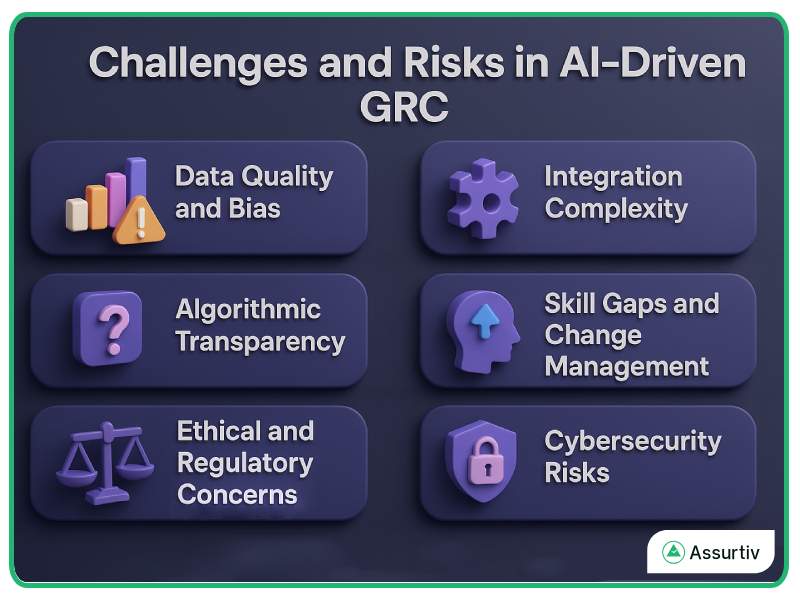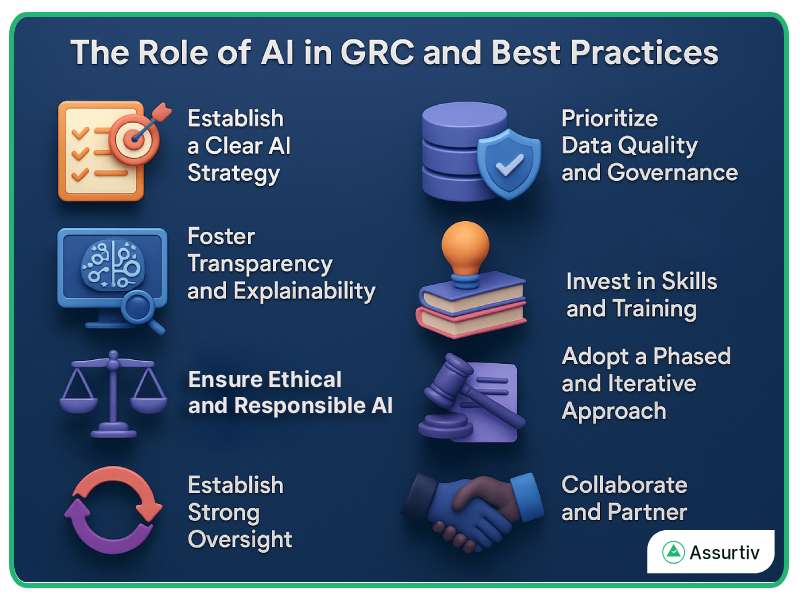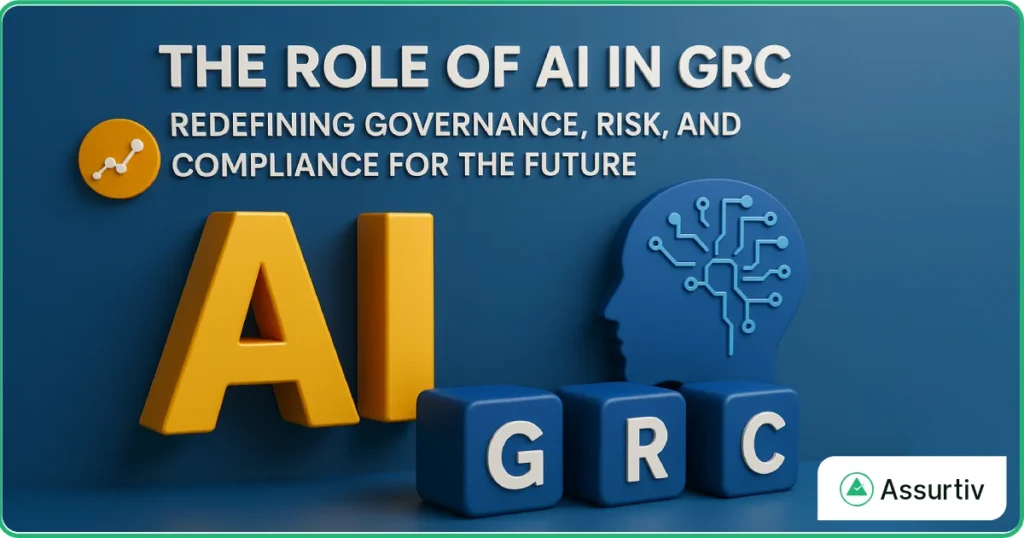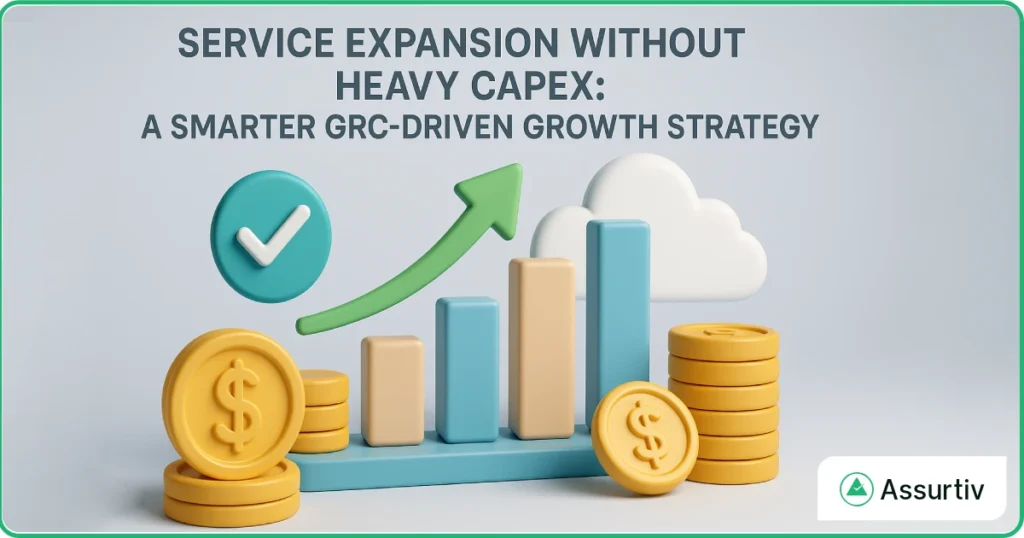The Role of AI in GRC: Redefining Governance, Risk, and Compliance for Future
By Dhiren | Published: 4 Nov 2025 | Last Updated: Not Modified
In today’s rapidly evolving business landscape, the integration of Artificial Intelligence (AI) has become a true game-changer, transforming how organizations manage Governance, Risk, and Compliance (GRC). As enterprises navigate increasing regulatory complexity and operational uncertainty, understanding the role of AI in GRC is no longer optional- it’s essential for sustainable growth and resilience.
By embracing AI-driven capabilities, businesses can streamline GRC processes, enhance real-time decision-making, and cultivate a culture of proactive risk management. From predictive risk analytics to automated compliance monitoring, AI empowers leaders to move beyond reactive frameworks toward intelligent, data-driven governance.
Leveraging machine learning algorithms, natural language processing, and advanced analytics, organizations gain a holistic view of their risk landscape- enabling smarter, faster, and more informed compliance decisions.
As this transformation unfolds, it’s critical to understand both the opportunities and challenges of AI-driven GRC and how best practices can help organizations responsibly integrate this technology.
GRC Strategies and Their Importance
Effective GRC strategies form the foundation of every successful organization. They ensure regulatory adherence, mitigate enterprise-wide risks, and foster a culture of ethical and responsible operations.
In today’s volatile business environment, where risks emerge from cyber threats, regulatory shifts, and market disruptions, having a robust GRC framework is not optional but a necessity. A strong GRC strategy aligns performance, accountability, and compliance.

Key benefits of a comprehensive GRC approach
- Compliance Enhancement: Stay ahead of evolving regulations and industry standards, minimizing risks and penalties.
- Risk Mitigation: Identify, assess, and proactively manage potential risks to safeguard assets, brand reputation, and business continuity.
- Transparency and Accountability: Establish clear governance structures that build stakeholder confidence and trust.
- Process Optimization: Streamline workflows, eliminate redundancies, and enhance efficiency to drive long-term sustainability.
When paired with AI-driven insights, traditional GRC frameworks evolve into intelligent ecosystems capable of predicting and mitigating emerging risks before they occur.
Benefits of AI-Powered GRC Strategies
AI-powered GRC strategies deliver transformative value across industries by automating, optimizing, and advancing how organizations handle compliance and risk.
Efficiency and Accuracy
AI automates repetitive, data-heavy tasks- such as monitoring, reporting, and analysis, freeing teams to focus on strategic initiatives. This not only saves time but also reduces human error, ensuring consistency in compliance execution.
Enhanced Decision-Making
By analyzing massive datasets, AI detects trends and anomalies humans might miss. It provides predictive intelligence, enabling organizations to make proactive, evidence-based decisions that strengthen resilience.
Real-Time Insights
AI systems process real-time data from multiple sources, giving organizations immediate visibility into their risk and compliance posture, something manual systems can’t match.
Cost and Productivity Gains
Automation and predictive analytics significantly reduce administrative overhead, improving operational efficiency while optimizing resource allocation.
Globally, companies adopting AI-driven GRC frameworks report measurable gains in efficiency, compliance accuracy, and stakeholder confidence.
Challenges and Risks in AI-Driven GRC
While AI offers tremendous potential, it also introduces new risks that must be managed responsibly. Understanding these challenges helps ensure ethical, transparent, and compliant adoption.

- Data Quality and Bias: AI’s reliability depends on data accuracy. Poor-quality or biased data can distort results, leading to flawed compliance or risk interpretations. Continuous data governance and validation are essential.
- Ethical and Regulatory Concerns: As AI influences decision-making, concerns around privacy, fairness, and accountability grow. Ethical frameworks and regulatory alignment must underpin every AI initiative.
- Integration Complexity: Merging AI with legacy GRC systems can be difficult. Scalable architectures and phased rollouts ensure smooth integration.
- Skill Gaps and Change Management: AI-driven transformation demands new skills and mindsets. Investing in upskilling and change management is crucial for adoption success.
- Cybersecurity Risks: AI systems themselves can become targets. Strengthening cyber resilience and AI risk governance is vital for protecting data integrity.
The Role of AI in GRC and Best Practices
To harness the full potential of AI, organizations must combine strategy, structure, and ethics. Below are best practices to guide this journey:
- Establish a Clear AI Strategy: Align AI initiatives with GRC goals and risk frameworks. Define objectives, scope, and expected outcomes.
- Prioritize Data Quality and Governance: Implement strong data ownership, validation, and monitoring standards to ensure accuracy.
- Foster Transparency and Explainability: Build systems that make AI decisions auditable and interpretable.
- Ensure Ethical and Responsible AI: Integrate fairness, accountability, and transparency principles throughout AI lifecycles.
- Invest in Skills and Training: Build AI literacy across compliance, audit, and technology teams.
- Adopt a Phased and Iterative Approach: Start with pilots, test, refine, and scale with confidence.
- Establish Strong Oversight: Form an AI governance committee to monitor compliance, ethics, and performance.
- Collaborate and Partner: Engage with AI experts, academia, and technology providers to drive innovation and share best practices.
 The Future of AI in GRC
The Future of AI in GRC
As AI matures, its influence on GRC strategies will expand exponentially transforming compliance from a reactive task into a predictive, intelligence-driven discipline.
Emerging trends shaping this future include:
- Explainable AI (XAI): Improving transparency and accountability in AI decisions.
- Continuous Adaptive Risk and Trust Assessment (CARTA): Real-time, adaptive risk assessment frameworks.
- AI-Driven Regulation Interpretation: Automatically analyzing legal documents for compliance updates.
- Augmented Intelligence: Collaboration between AI systems and human experts for enhanced decision-making.
- Integration with Emerging Tech: Combining AI with blockchain, IoT, and 5G for real-time monitoring and risk detection.
- Continuous Auditing and Monitoring: AI replacing static audits with ongoing compliance surveillance.
As the future unfolds, the role of AI in GRC will be to transform compliance from a reactive obligation into a predictive, data-driven discipline. Organizations that embrace this transformation early will gain a significant competitive edge, achieving greater agility, transparency, and operational excellence.
The future of GRC belongs to organizations that act today. Leaders who invest in AI-driven governance and risk frameworks are not just ensuring compliance, they’re future-proofing their businesses.
Whether you’re a CEO aiming for sustainable growth, a CISO reinforcing enterprise resilience, or a GRC manager driving innovation, now is the time to reimagine your compliance strategy through the power of AI.
Start exploring the role of AI in your GRC journey today by scheduling a demo with Assurtiv — because the next era of governance is already here.




